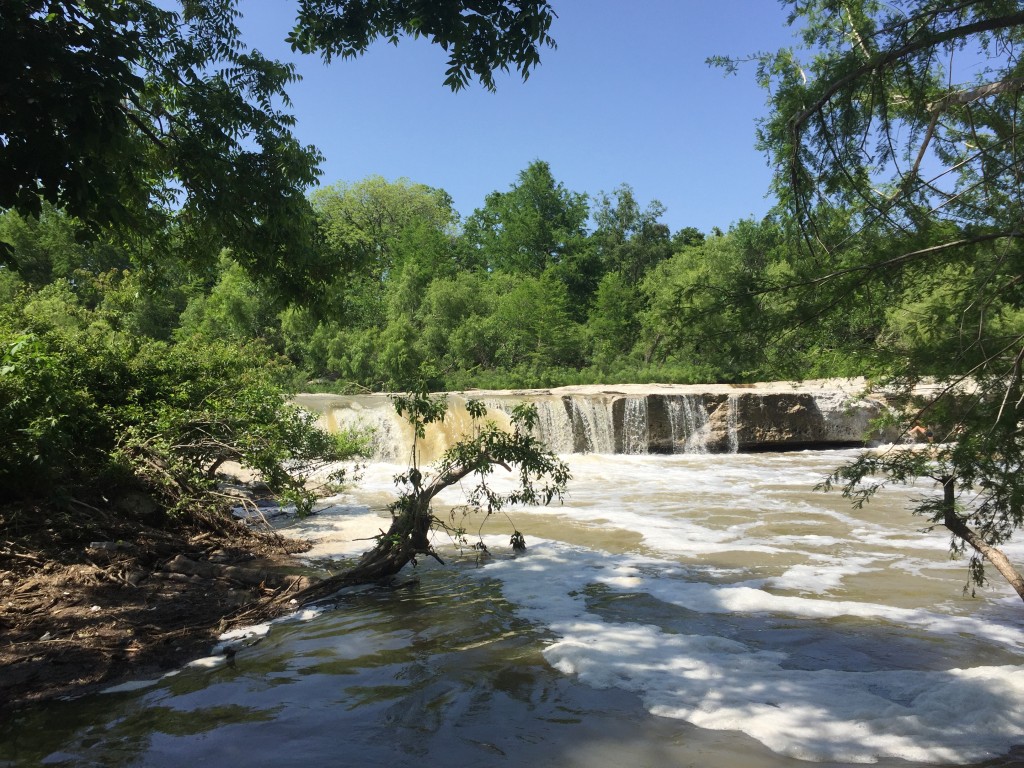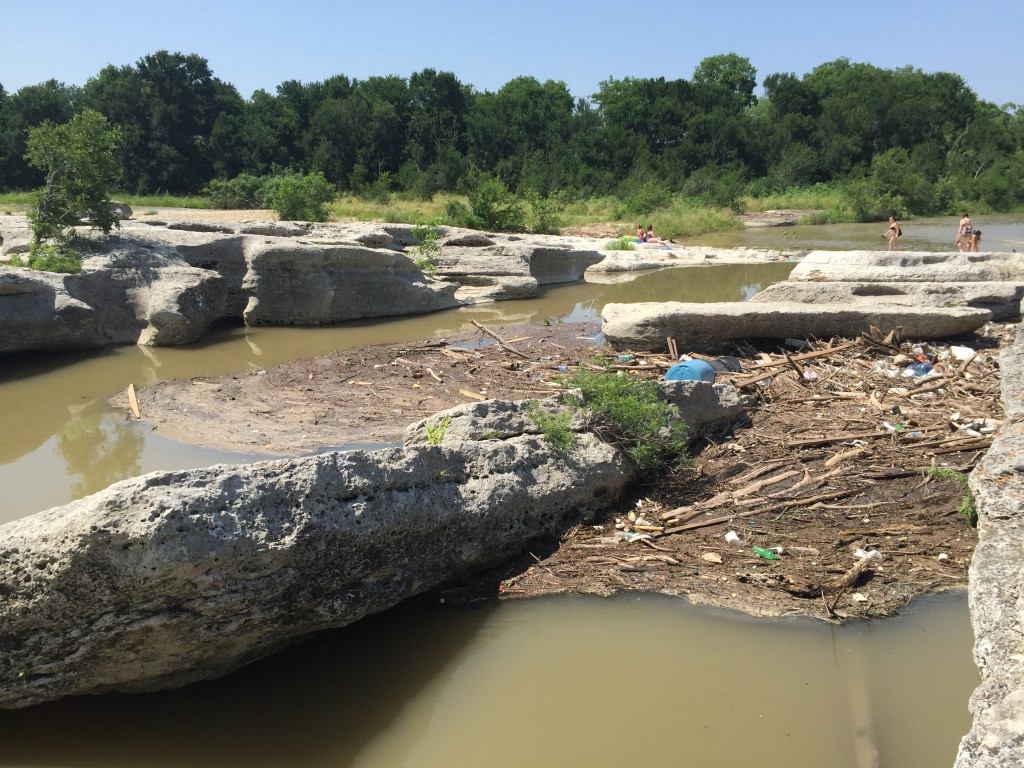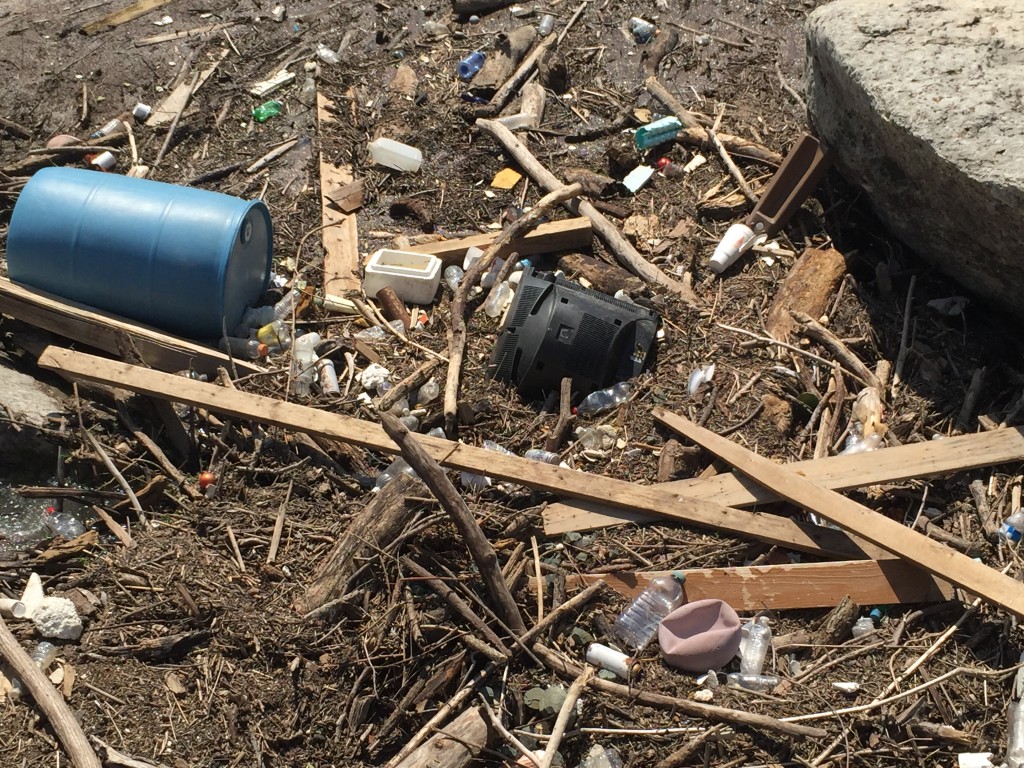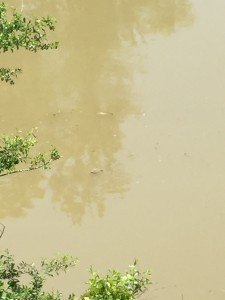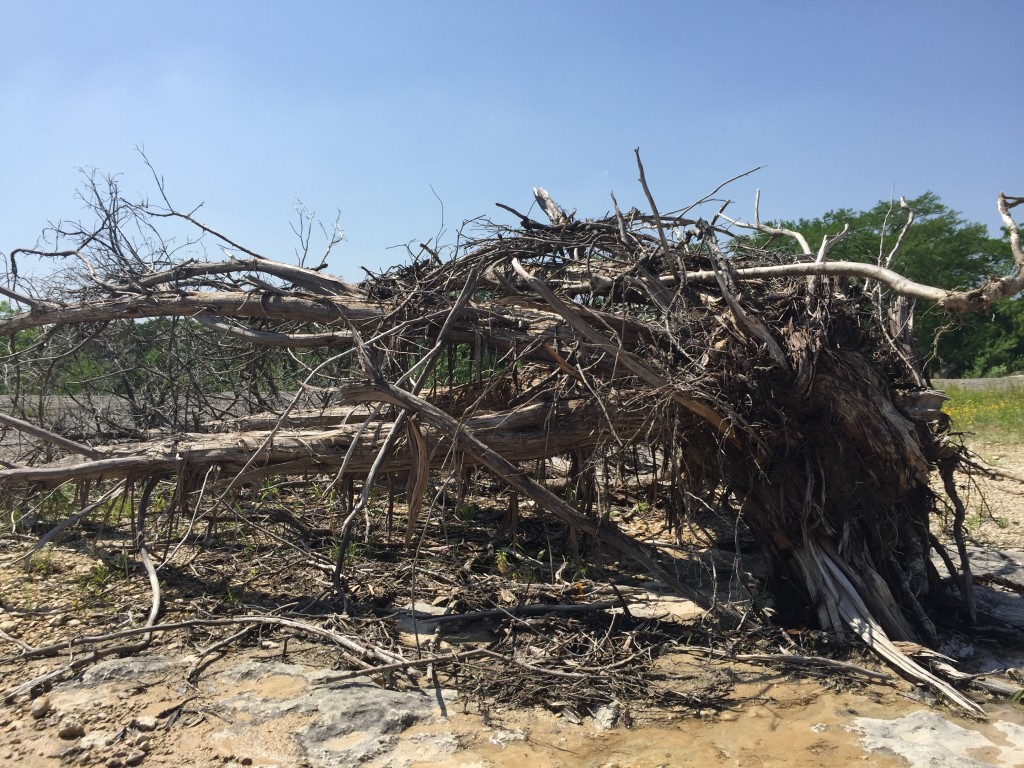Climate Change & Conservation: State Level
It is a river who wields the brush, and it is the same river who, before I can bring my friends to view his work, erases it forever.
–Aldo Leopold, A Sand County Almanac
When it came to looking at the state level, I didn’t even have to think about where I was going to visit. In Fall 2014, I took Dr. Wasserman’s environmental science class where I visited McKinney Falls State Park twice a month to reflect in nature. During that period of time, Texas was going through a severe drought, and the falls was barely a trickle running over the limestone shelf, if even that. Funny enough, this visit prompted me to look back at my blog posts from A Travis County Almanac and reflect on my first experiences in this park.
I recalled how dry it was when I first visited the park. There was a presence of small pools of water in the limestone, and access to the Homestead Trail was incredible (you didn’t have to worry about having to pack a swimsuit and cross the rapid river to get to the trailhead like you do now). I remember how when the water levels rose just a slight amount where there was real stream going over the falls, I was so excited! This small, two-foot flow of water made me feel like there was hope yet. Then the heavy rains hit and caused a real difference in the water levels, bringing Onion Creek back in full swing for what seemed like a while, making access to my favorite hike near impossible. And lo and behold, the river actually stayed, bringing with it the return of a beloved Austin swimming hole.
I know all this commentary makes it seem like I could be bitter that the river has returned, and let me say that that is not the case! I am incredibly happy that the state of Texas is out of drought conditions. It was very scary for the past few years thinking that Texas could dry up and leave many without a proper water source, but I don’t think we are out of the woods. If anything this just further illustrates the danger of climate change in that the climate has fluctuated so much over the years. My concerns lie with the fact that with these changes, the staff that maintains the park will continue to face more and more issues.
Over the past few months some severe issues have been appearing in the falls, which include trail maintenance and litter cleanup. I am going to be focusing mainly on the litter that seems to have cursed McKinney Falls. If you are familiar with McKinney, you will recognize the bend in Onion Creek right before the lower falls area, or maybe you won’t recognize it. In this area, several hundreds of pounds of garbage have gathered into a solid mass blocking the flow of water. As I came upon it, I was shocked to see several people, adults and children alike, playing around the mass of trash. One child fell into the mess, knee deep in stagnant, filthy water. One parent even took a board and placed it on top of the litter to let his daughters cross. He then followed suit, and to my horror, the litter did not budge, indicating that the litter was so deep that it was stable enough to support a full grown man and his children. I was appalled.
When I discussed the litter with a park ranger, they said that they were aware of the situation, and that it happens all the time in certain parts of the river, but the best way to remove the litter is to wait until the water levels have decreased so they can just haul it out. However, for the past few months, water levels haven’t really gone down due to the amount of rainfall that Austin has been getting. This opened up the opportunity for me to ask the park rangers my question about climate change and its effects on state parks. The rangers then told me the biggest issue they face are the changing weather conditions. There are new weather patterns that have influenced how the park operates. Similarly to Death Valley, they were expecting El Nino effects earlier in the year, and when they didn’t come, they just assumed that that was the situation. And now that they are happening now, they are ill equipped to deal with it. That led to me asking what the state parks do to combat climate change. The rangers told me pretty much what I learned at the federal level, that they can’t really combat climate change, but they do learn how to handle the side effects of climate change.
All in all, I thought it was very cool to see that although the ways the parks deal with the issues may be different at every level, there is a sort of uniformity to it. They all contest that the solutions lie in the people that surround the park, that conservation is not enough. We as a culture and society need to change if we wish to prevent further damage from climate change. The governments can only do so much when it comes to these issues. The main lesson I have learned about McKinney Falls is that even blessings can be curses in disguise. Though the river’s return may seem like the best thing that could happen, it can harbor some very destructive tendencies. Flooding has become frequent, litter seems to continue to accumulate, and it really is on us if we want this to change.
Sources:
Interviews with Texas Park Rangers
http://tpwd.texas.gov/state-parks/mckinney-falls
http://tpwd.texas.gov/newsmedia/
http://droughtmonitor.unl.edu/Home/StateDroughtMonitor.aspx?TX
http://tpwd.texas.gov/education/resources/keep-texas-wild/one-state/conservation-challenges

